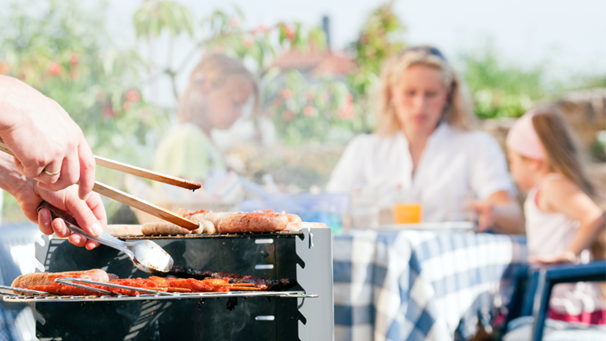
Burns at home happen at an alarming rate. Accidents can happen anywhere, including in the comfort of our own homes. Burns, in particular, can occur due to various reasons, ranging from scalding liquids to contact with hot surfaces. While prevention is the key to avoiding burns, it is essential to know how to treat them if they do occur. Explore effective methods for treating and preventing burns at home, focusing on fire pits, barbecue grills, and other relevant scenarios. The information presented here is based on reputable sources and is intended to provide valuable guidance for ensuring your family’s safety.
According to the American Burn Association, an overwhelming 85% majority of scald burns happen at home, compared to 74% for other types of burns. 3 In children < 5 years of age, the in-home injury rate increases to 95%. Scald burns (from hot water, other liquids, and steam) comprise 35% of overall burn injuries admitted to U.S. burn centers.
Treating Burns
When a burn occurs, it is crucial to respond promptly to minimize damage and alleviate pain. Follow these steps for immediate treatment:
- Remove the Source: If the burn is caused by a hot surface, such as a fire pit or barbecue grill, carefully move the person away from the source of heat to prevent further injury.
- Cool the Burn: Hold the burned area under cool (not cold) running water for at least 10 to 20 minutes to help reduce pain, swelling, and potential tissue damage. Avoid using ice or very cold water, as extreme cold can cause additional harm.
- Remove Constrictive Items: If the burned area is not covered by clothing, gently remove any constrictive items, such as rings or bracelets, before swelling occurs.
- Cover with a Clean Cloth: Cover the burn with a clean, dry cloth or sterile non-stick dressing to protect it from dirt and minimize the risk of infection.
- Over-the-Counter Pain Relief: Over-the-counter pain relievers, such as acetaminophen or ibuprofen, can help alleviate pain and reduce inflammation. Follow the recommended dosage instructions.
- Seek Medical Attention: Seek medical attention for burns that are severe, cover a large area of the body, or are accompanied by symptoms such as difficulty breathing, blistering, or signs of infection.
(HealthyChildren.Org)
Preventing Burns
Prevention is always better than treatment when it comes to burns. Here are some key measures you can take to reduce the risk of burns at home, especially in relation to fire pits and barbecue grills.
- Fire Pit Safety: Keep a safe distance between the fire pit and any flammable materials, structures, or vegetation. Never leave a fire unattended and ensure it is completely extinguished before leaving the area and teach children about the dangers of fire pits and establish clear rules for their use. (American Burn Association)
- Barbecue Grill Safety: Position the grill away from structures, overhanging branches, or combustible materials. Use long-handled tools to avoid getting too close to the flames and always supervise children around the grill. Ensure the grill is clean and well-maintained to prevent grease buildup, which can cause flare-ups. (American Burn Association)
- Hot Liquids and Food Safety: Be cautious when handling hot liquids and foods, especially around children. Keep hot beverages out of reach and use spill-proof containers when possible. Stir and test the temperature of heated foods before giving them to children to prevent scalding injuries. (Stanford Medicine Children’s Health)
- Fire Safety: Install smoke detectors on every level of your home and regularly test and replace batteries. Have fire extinguishers readily accessible and ensure family members know how to use them. Create and practice a fire escape plan, including designated meeting points outside the home. (Stanford Medicine Children’s Health)
Burns can cause significant pain and lead to long-term consequences if not treated properly. By following the steps for treating burns and implementing preventive measures, such as practicing fire pit and barbecue grill safety, you can significantly reduce the risk of burns at home. Remember, vigilance and caution are key to maintaining a safe environment for you and your family.
When to Go to the ER
If the burn is life-threatening, dial 911 for emergency medical assistance. If you believe the burn is not life-threatening, head to the ER. Rice Emergency Room located at 2500 Rice Blvd in Houston is open 24/7, 365 days to handle all medical emergencies. We offer no wait to be seen by a Board-Certified Emergency Physician, and offer a level of care that West University Place and surrounding communities have learned to trust for excellence in patient care.
Works Cited
“Burn Treatment & Prevention Tips for Families.” HealthyChildren.Org, www.healthychildren.org/English/health-issues/injuries-emergencies/Pages/Treating-and-Preventing-Burns.aspx.
“Prevention Resources.” American Burn Association, 22 Nov. 2022, ameriburn.org/advocacy-and-prevention/prevention-resources/.
“Default – Stanford Medicine Children’s Health.” Stanford Medicine Children’s Health – Lucile Packard Children’s Hospital Stanford, www.stanfordchildrens.org/en/topic/default?id=preventing-burn-injuries-90-P01750.
 24x7 Available
24x7 Available
